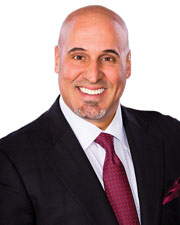
The time is right to take advantage of tax-friendly Opportunity Zone funds - by Lou Fuoco

Fuoco Group LLP
Real estate investors and developers have been flocking to opportunity zone funds to take advantage of the best kept secret within the Tax Cuts and Jobs Act: the Investing in Opportunity Act.
By re-investing capital gains into a certified “Opportunity Zone,” to revitalize distressed communities and create jobs, investors have the ability to defer tax, or exclude part or all of the tax on the capital gain invested, as well as the gain earned on their investment. The investment can be passive or active.
Investors must have the ability to locate, identify and execute an Opportunity Zone project. To expedite this, President Trump recently created the White House Opportunity and Revitalization Council. This task force will coordinate the efforts of government agencies to boost federal resources into Opportunity Zones.
Time to get educated:
1. Qualified Opportunity Zones (QOZ) are low-income communities certified by the Secretary of the Treasury. Each designated QOZ remains in effect from the date of designation to the close of the 10th calendar year. All QOZs must terminate December 31, 2028.
2. Qualified Opportunity Funds are investment vehicles organized as a corporation, partnership, or LLC. The investor receives either stock or an equity interest in the fund. The QOF must hold 90% of its assets in a QOZ Property, measured both on the last day of the first six-month period of the taxable year of the fund, and the last day of the taxable year of the fund. There is no cap on the amount of money that can be invested in QOFs. Opportunity Funds can provide the following tax incentives:
• Deferral of capital gain.
• Reduction of the amount of capital gain realized through a basis adjustment.
• Permanent exclusion of capital gain on the appreciation of the interest in a QOF.
To be eligible to elect the deferral of gain, the taxpayer must invest within 180 days of when the capital gain was recognized and must make an election for that tax year. A QOF must be certified. Taxpayers can self-certify by completing and attaching Form 8996 to their tax return in the year they establish the QOF.
Qualified Opportunity Zone Property includes:
• QOZ Business Property, tangible property acquired after December 31, 2017, of which substantially all of the use of the property is in a QOZ Business. Either use of the property originates with the fund, or the fund substantially improves it.
• QOZ Stock, any stock in a new corporation organized to be a QOZ Business, or domestic corporation doing business as a QOZ Business purchased by the QOF after December 31, 2017, solely in exchange for cash.
• QOZ Partnership Interest, any capital or profits interest obtained by the QOF after December 31, 2017, solely in exchange for cash, in a domestic partnership operating as a QOZ Business.
3. Qualified Opportunity Zone Business is defined as a trade or business in which:
• At least 70% of its tangible property, owned or leased, is QOZ business property.
• At least 50% of total gross income is from the active conduct of its business.
• A substantial portion of its intangible property is used in the active conduct of its business.
• Less than 5% of the average of its aggregate unadjusted basis of the property is attributable to nonqualified financial property.
• No portion of the proceeds, or provision of land, is used for a golf course, country club, massage parlor, hot tub or suntan facility, racetrack, gambling facility, or business selling alcoholic beverages.
The QOZ must hold at least 90% of its assets in QOZ Property, but the QOZ Business only needs to meet the 70% threshold to satisfy the “substantially all” requirement.
Additional tax incentives:
• Election to temporarily defer capital gains invested into a QOF until the earlier of:
A: The date an investment is disposed.
B: December 31, 2026, subject to the 180-day period.
• Ability to preserve the exclusion of the post 10-year gain election, provided the disposition of the investment occurs prior to January 1, 2048.
• Permanent exclusion of 10% or 15% of the originally deferred tax:
A: If the investment is held for at least five years, the investor receives a 10% reduction in tax.
B: If the investment is held for at least seven years, the investor receives a 15% reduction in tax.
Permanent exclusion of any gain attributable to appreciation in the QOF’s investment for investors who hold their investment in a QOF for at least ten years.
Real estate developers can establish a fund to generate third-party investment capital for their projects and use their fund to defer tax on the sale of capital assets. By investing the gain in a QOF they will pay less in taxes. Passive investors benefit from deferral of tax payments on recognized gains for up to eight years (the latest date being December 31, 2026) with up to a 15% gain reduction and the possibility of avoiding any income tax on the QOZ investment if held for at least 10 years.
Lou Fuoco, CPA, CEPA, is the managing director of Fuoco Group LLP, Hauppauge, N.Y.